Introduction –
With big trips to Slovakia and Zurich under my belt and armed with a new oxygen system, it was time to extend the legs of the aircraft again with a bucket list trip to Bologna, Italy. I had previously flown to Bologna a few times as a cabin crew, but I longed to return to Italy’s hidden secret.
With its breathtaking cityscapes, world-renowned food, and untouched cultural architecture combined with the later summer warmth, this was a trip I longed for. What better way to do it than with my fellow friend and photographer, Andy.
With a trip finally planned across the Alps, what could possibly go wrong? Oh yes, thunderstorms.
The Plan –
The aircraft was booked from the 3rd of August until the 8th of August to fly to Bologna, staying a few nights, then flying back to the UK. The flight was likely to be done directly unless we had additional passengers onboard. There was a caveat that Andrew couldn’t get all the time off work, so we elected to stay from the 4th until the 7th, two nights in Italy, a bit short considering the flights are 5-5.5 hours each way.
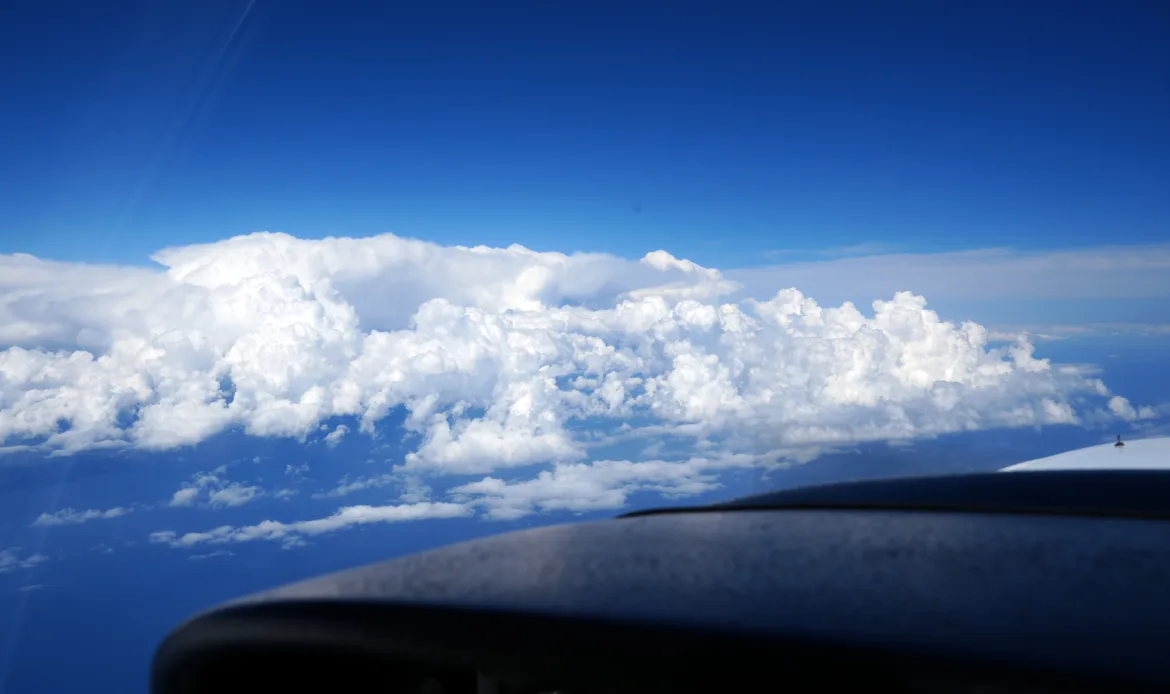
A few people mentioned on the Euro GA forums that they had visited this year, and the reviews looked encouraging. Italy seems hugely political towards general aviation, with prohibitive costs and refusals to park or land at multiple aerodromes across the country.
Airport Choices –
Airport choices are based on a few things for IFR flying: accessibility (customs and police), handling charges not being excessive, and a new restriction: Category A aircraft not being accepted at the airport. This is not permitted at airports like Barcelona El Prat, and in some cases, because airports are not allowed to ban, they ban by stealth, in effect charging you excessive fees. Jet A1 availability is not an issue at most major international airports for the aircraft that we fly.
There are a few airports near Bologna itself in the Emilia-Romagna region of Italy. Finding an airport that we could use looked fairly difficult, so this option was likely to be a relatively easy choice with limited other options.
Bologna Guglielmo Marconi Airport – BLQ/LIPE –
The main international airport serving the city of Bologna. It is conveniently located 3.7 miles northwest of the city centre. It has a long runway and would be ideal for IFR arrival or departure for an international flight.
Reggio Emilia Airfield – LIDE –
Reggio Emilia Airport is located some 45 miles from Bologna and is not IFR. If the flight were direct, this airport does not have customs or immigration, so a stop in mainland Europe would have to take place.
Parma Airport
Parma is located 62 miles northwest of Bologna and would also be ideal for IFR arrivals and departures. It is not as convenient as due to a lack of flights; customs and immigration are only on request, something that is not ideal for light-GA with changeable plans.
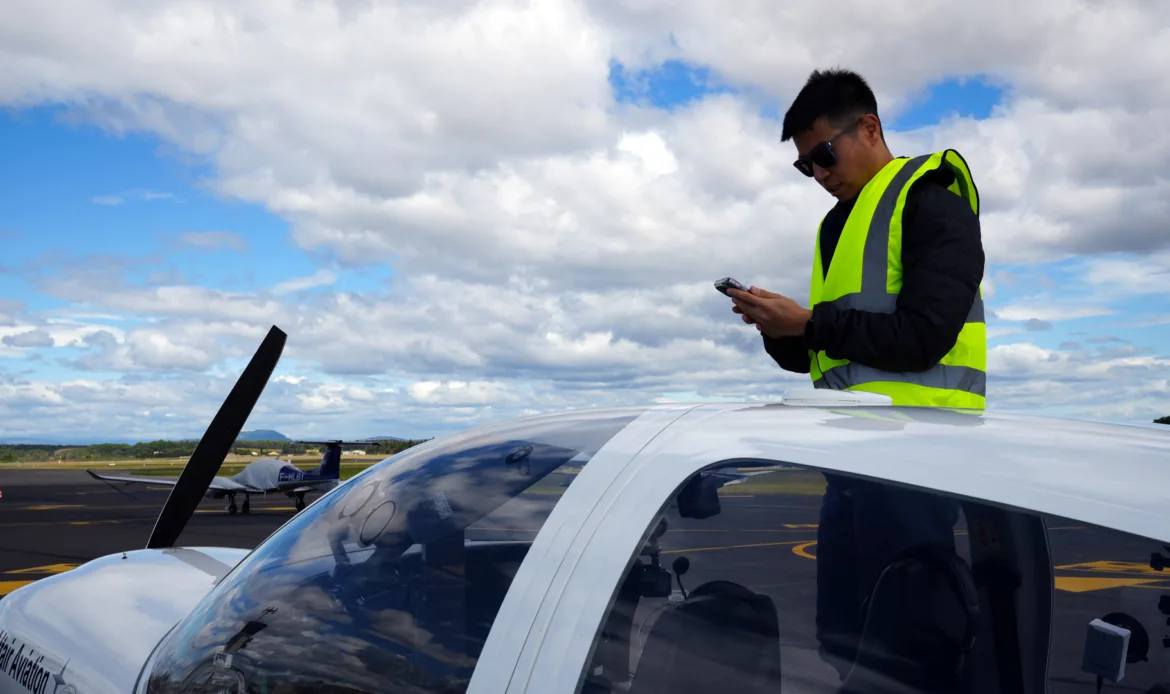
Handling/Airport Quotations –
I contacted TAG Aviation, based in Bologna, being the sole provider of handling for GA (General Aviation), and requested a quotation for the aircraft for a 3-night stay in Bologna. The handlers got back to us with pricing but stipulated they’d need to speak with us again after the weekend due to restrictions on parking and that they had limited capacity to handle us.
This was disappointing but seems to be a reoccurring theme up and down the country, and I would likely have to reconsider options if this wasn’t possible. While I was anticipating a quotation, instead I received the prices for both the airport fees and the handling charges.
Accommodation –
I had been looking at properties for a good amount of time before this trip and wanted a decent place to stay, but at the same time, I wanted something conveniently nearby to the centre of Bologna. Choices were hard, and it was also difficult to find a property that wasn’t overly expensive.
After a recent bad experience in a 3-star hotel in Ibiza, I’ve elected to select a minimum 4-star hotel. From my recent experiences, 3-star accommodations can be relatively risky in a post-COVID world with a stark lack of maintenance and care. I also wanted a swimming pool and a gym, just to keep fit before my medical renewal.
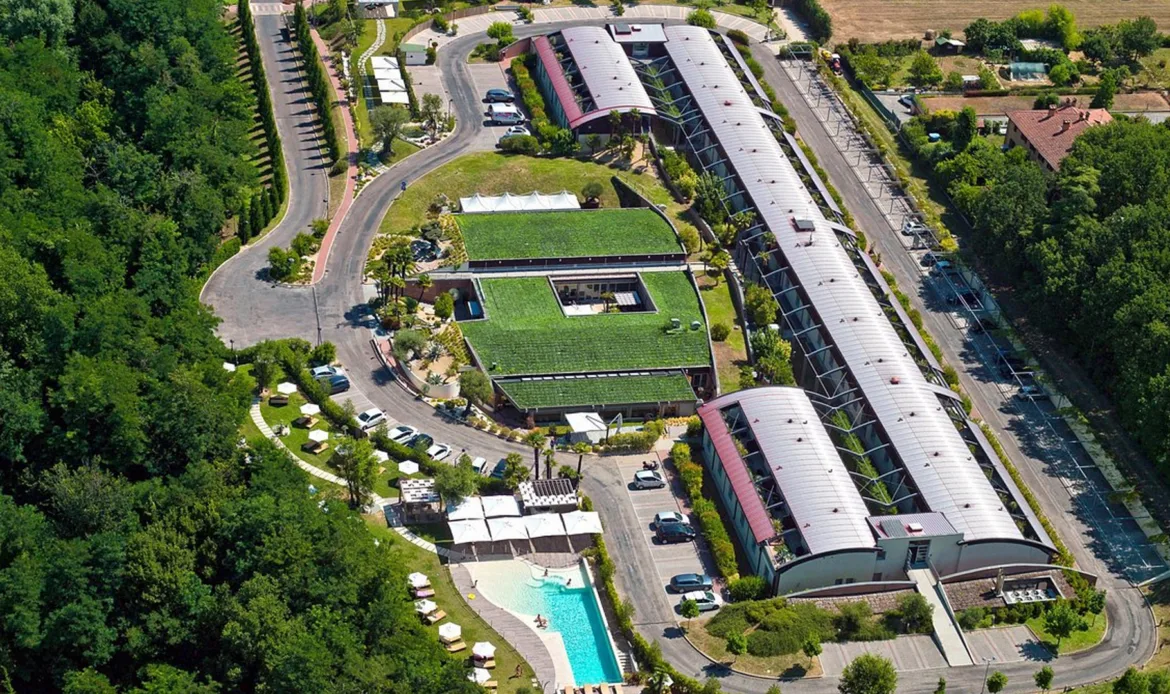
I shortlisted a few good options, all a distance away from the city centre.
I left the final choice to Andy, who confirmed quite late on that he was coming, and he booked The Relais Bellaria, which came with a Michelin-starred restaurant on site, albeit something we only realised when sitting down at the hotel.
Weather Forecast –
The FAX charts for Friday showed an area of low pressure situated fairly close to southern France. With somewhat of a battleground of complex frontal systems across Europe and the Mediterranean Sea, this was a hard choice to commit to the flight, but a gap appeared flying west of Paris, then south of the main frontal system to Bologna.

TAF EGSS 040457Z 0406/0512 31008KT 9999 SCT040 PROB30 TEMPO 0406/0408 BKN008 PROB30 TEMPO 0410/0419 4000 +SHRA PROB40 TEMPO 0505/0512 3000 +RA BKN008=
TAF for London, Montpellier & Bologna on 4th of August
TAF LFMT 040200Z 0403/0503 29014KT CAVOK BECMG 0408/0411 32018G30KT TEMPO 0414/0421 32022G34KT BECMG 0421/0424 31015KT=
TAF LIPE 040500Z 0406/0506 20010KT 9999 FEW050 TEMPO 0415/0418 4000 TSRA=

TAF LIPE 071100Z 0712/0812 VRB05KT 9999 FEW010=
TAF for Bologna, Montpellier & Bologna on 7th of August
TAF LFMT 070800Z 0709/0809 34012KT CAVOK BECMG 0713/0715 20010KT BECMG 0717/0718 VRB05KT=
TAF EGSS 070458Z 0706/0812 30006KT 9999 FEW045 PROB30 0802/0806 8000 PROB30 TEMPO 0809/0812 8000 RA BKN010=
For the flight home, it looked 50/50 for a flight via the Alps and less favourable for a direct flight to the UK due to strong headwinds. There were no frontal systems over France or Italy, so this was likely to be the route.

Change of Plan –
Not only did my plan of being away change slightly because my friend could only take a certain number of days off from work, but as the days approached, I was looking at the weather and wondering if I had to make an alternative plan and a different route to get to Bologna. While the DA40 is a very capable aircraft, FL160 can be achieved (as I proved on the way to Slovakia): it cannot outclimb severe weather, such as thunderstorms or severe turbulence, and even if you managed to safely navigate through that weather, there’s an ever-growing threat of icing conditions instead, which the aircraft cannot deter.
The original plan was currently trying to work out if it’s feasible to risk flying across the Alps via N850 between RIPUS (near Zurich) and ODINA. Following a very similar route to my previous Zurich trip before crossing the mountains and heading south towards Bologna in roughly a 5-5.5-hour flight time.

I did have an alternate plan to fly down to Bologna, then south of Nice, and this was an option, but the weather was showing a Jetstream core above my level at 100–125 KTS. The issue with these routings is that the quickest route is only available above FL150 both ways; otherwise, you are forced well south over the Med.
I discussed this over at EuroGA with fellow members of the group for their input and knowledge, and the general consensus was that the safest route was south of France, then across ahead of the front. So ahead I went and planned a far earlier departure than I hoped for to arrive in Bologna by late afternoon.
On the afternoon before the flight, I made the journey to Stapleford to prepare the aircraft with fuel, fit the oxygen bottle, and take the additional time to fit the GoPro’s and headsets, ready for tomorrow’s flight. I carefully fuelled the aircraft with enough fuel for the journey south to southern France. All that was left to do was check the aircraft over in the morning and make sure she was ready for the long journey to Italy.
Tech Stop in Montpellier–Méditerranée –
There are two potential stops that I’ve looked at in Southern France that seem to be reasonably popular amongst Euro Tourers. Beziers is one, and Montpellier is the other which appears to be a H24 airport. Whilst there was some bizarre restriction on PPR for non-based aircraft it was still possible to email them on short notice and get a quick tech stop in.
A3594/23 NOTAMN
Q) LFMM/QMKLT/IV/M /A /000/999/4335N00358E005
A) LFMT B) 2306291533 C) 2310282359
E) PARKING LIMITED FOR ANY NON BASED AND NON REGULAR ACFT :
REQUEST TO BE TRANSMITTED UPON 3 DAYS PPR BY EMAIL TO :
PCE(AT)MONTPELLIER.AEROPORT.FR
CREATED: 29 Jun 2023 15:33:00
SOURCE: EUECYIYNThe other options, but at a higher cost were Marseille Provence Airport or Cannes, both with weather forecasts beyond the envelope of the aircraft. The costs of these which I didn’t investigate, however, I had looked at Montpellier previously for last year when I was planning on a trip to Ibiza.
Flight to Montpellier –
The earliest I could depart was probably 0700 local. Sunrise, however, is at 05:29, so theoretically one could depart just after that time, but I don’t think any of the local residents would be happy. Besides, the airfield slowly becomes active at this time, so it would make sense that this is the most reasonable for noise.
With a 0550z off-block time planned, I had to be at the airfield earlier than I could ever get there before. So without a car, I had pre-booked an Uber to pick me up; this was pretty expensive at £57.70, but I was picked up at 0510 for a 0600 local arrival to prepare the aircraft for departure, which meant more time in bed than using or relying on public transport. I arrived at the airfield at 0550 and took the short walk to where I had moved the aircraft to minimise noise on the airfield.
I prepared the aircraft before Andy would arrive, making sure everything was perfect for the 4-hour sector to Montpellier. With a nice tailwind, this would be a very quick flight and make a huge difference to the last time I flew south; in fact, on most flights where I normally have a headwind, everything was working out despite the extra 3 hours of flying and 4 hours of journey time required due to the severe weather over the Alps.

But this is what the IR training prepared me for: the experience of not only flying the aeroplane in instrument conditions but also being tactile in flying and navigating safely in some of the most severe weather conditions a light aircraft can encounter, although with this sort of weather you would avoid and give as much of a wide berth as possible.
With Andy arriving, we donned our life jackets. I called the number on the AIP for the relevant sector to get my release, and after a few minutes, the assistant came back with our regular departure routing and slot, thus our release into the airways system.
We taxied over to the threshold of Runway 03R to do our final checks, having done the power checks and briefed for our eventual departure—maintaining noise abatement and ensuring compliance with the procedures for remaining outside of controlled airspace. We departed runway 03R, and as soon as we got airborne, we could start to clearly hear ATC on the Thames Radar. Once I could maintain a clear two-way signal with the Thames Director, I contacted them, announcing that we were on track DET and climbing to 2,400 feet.
Our further climb was delayed by a Swiss aircraft on arrival in London City, but as soon as it was clear, we were climbed up to 4000 feet, then handed off to London Control for further climbs and vectors.
The fascinating thing about this flight was that it was the first time that I had flown and had multiple layers, multiple layers to a high level before breaking out. These were very thin layers as part of the approaching front, and it made for a different perspective as we climbed towards our cruise level, which we reached approaching the south coast.

We quickly headed towards DVL VOR, where some weather was starting to build. The forecast later for some sharp thunderstorms was definitely coming to fruition, and as we slowly monitored the weather in case it would bust through our level, we had to make some detours off route. I try to be on the ball with this, as I’ve heard of horror stories of ATC not allowing deviations and ending up in some cells for the worst ride of your life, but ATC normally seems to allow for a deviation as long as done promptly.
I did have some issues with COM 1 where I couldn’t hear air traffic control that well, but switching to COM 2 seemed to work a lot better, strangely. London handed us over to Paris well before the crossing as we headed south towards France, where conversely, ATC gave us a vector due to military traffic, which meant we avoided going over the top of any cells that we may have wanted to avoid.
A new one that I wanted to try on this route that was suggested to me by the owner of the aircraft was grapes, especially for the longer flights. Grapes are good because they moisten your mouth but don’t increase the water intake that a bottle of water or juice would do, so they make for a very healthy and delicious snack during the cruise.
This was Andy’s first long trip in the aircraft, and he came well prepared with his iPad, so luckily he could keep somewhat occupied for the lengthy cruise, which can become boring unless you have something to do.
For a lot of the flight, I spent time monitoring the weather around me, what enroute alternates were usable, and the weather as I flew near them so I could land if anything happened. It’s my best policy to list enroute alternates, have access to charts, prepare the navaids just in case, and brief what likely runway was in use. I mostly write METARS and decide if it’s a doable alternate and which one I am likely to use if I need to land. A lot of the time, this could be in IFR conditions, but it is strictly important if I need to get onto the ground safely.
One of the key things when flying airways is to include the following remarks: This optimises your flight plan and allows the IFPS team or ATC to reroute you as efficiently as possible.
RMK/IFPSRA
Whilst I’ve never had any airways rerouted before take-off, this is always possible; most of the time when airborne, I am given a reroute, and this is evident when looking back at the log and a complete change of airway to avoid military airspace with high levels of traffic or weather. The weather always seems to appear higher than it actually is, but most of the time at FL150, this isn’t a factor except for severe storms or a line of cells that could really make your day go from bad to worse.
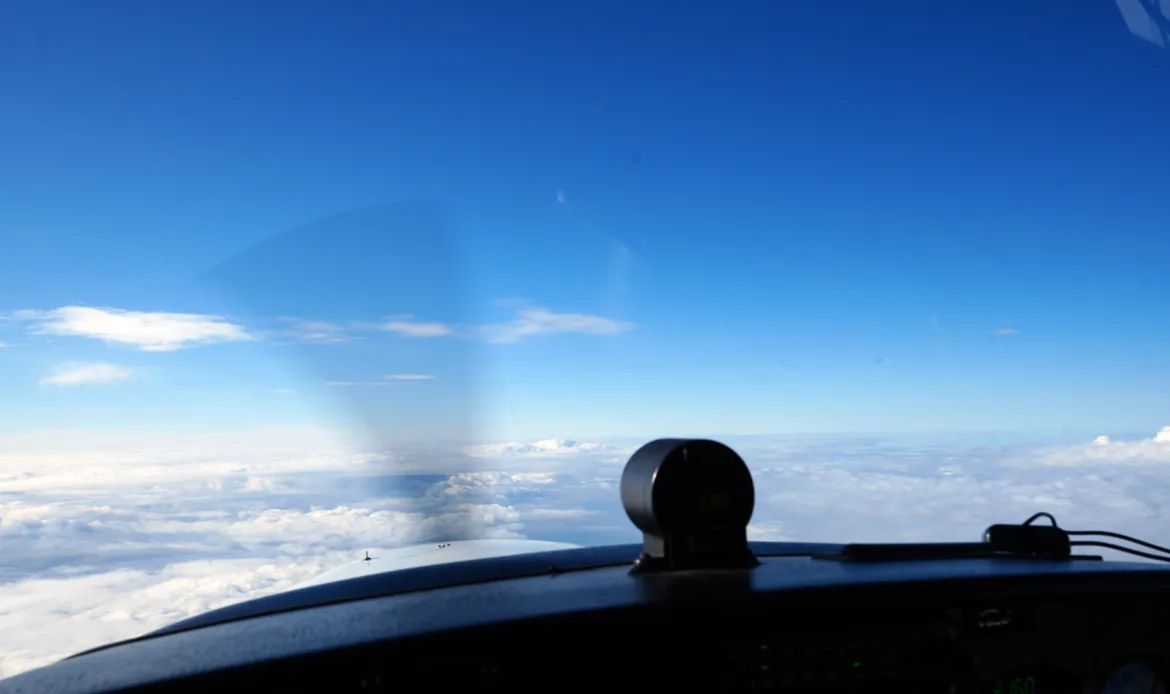
We were given direct AMB VOR, then ATC changed plans again and gave us a further routing that was not even on my flight plan, and sometimes you have to expect this, especially with the above message in the flight plan, but on most occasions in low airways, you must expect this, but eventually you’ll end up in the correct direction.
We then started heading back towards our airway routing, as ATC gave us further route information as we tracked south. For the majority of this flight, it was watching clouds, telling Andy what clouds look like, and him falling asleep as a result. Most of the time, this is what IFR flying is all about; preparation is key, and failing to prepare often results in a bad flight. But for this sector, we were well ahead of where we wanted to be, eating grapes and enjoying the views, well, at least I was.
As we approached the Massif Central, a highland region in south-central France consisting of mountains and plateaus, the weather changed, with lots of clouds that looked ominous. I believe most of these clouds were Stratocumulus lenticularis, probably from the wind coming over the nearby Pyrenees, and I was expecting some pretty rough conditions, but there was nothing more than the odd light jolt. But I kept my distance, and everything seemed normal despite the strong winds that were predicted.
The strong winds were evident in my pre-planning, but the TAF looked reasonable, straight down the runway, and the alternatives I had, Beziers and, at worst, Perpignan, looked reasonable, although the strong wind was straight down the runways and was only forecast to get stronger as the day went on.
I did find it quite odd that at this time of year, there were strong winds, but apparently, it’s a thing called the Summer Mistral. The forecast was nowhere near as strong for me to want to cancel, but I did expect things to be a little rough, plus the added time of the day and thermals starting to peak.
As we began our slow descent into Montpellier, we spotted some weather that looked like a towering cumulus; although it was probably more multiple layers combined on top of each other, I elected to avoid it just in case, especially as it’s August and anything that looks ominous should be treated with respect.
With the wind being fairly strong, I did expect that the lower we got, the more we would feel the gusts, and even though we kept the speed up, it wasn’t too bad after all. Just notably lumpy from either the gusts or the thermals over the bits of land that we crossed on approach (which was mostly over the sea).
The Diamond DA40 is very prone to turbulence at the best of times; it has a big wing, so it has low wing loading, so you feel it a bit more than some other aircraft in its class.
Rather annoyingly, as we began our flare after an almost perfect approach onto runway 30R, I was robbed of a great landing by a freak gust and some unexpected wind shear. Could I have gone around? Probably? But I was comfortable enough to perfect the landing and survive the onslaught of the summer mistral.
I decided that 1 hour would be enough to turn the aircraft around at Montpellier, but probably closer to 1 hour (15 or 90 minutes) was ideal, being not too familiar with this airport. But I wanted to save time and reach Bologna in time for dinner and before the weather to the north would move in.

This flight was quick—4 hours, 1 minute, and 33 seconds, to be precise—averaging 164 knots all the way. We pulled onto our booked stand, and not long after the JetA1 fuel truck turned up, and despite some language barriers, luckily there are a fair few JetA1 DA40s that operate here, so the fuel engineer understood to fill enough but not overfill it.
ATC Flight plan and route flown –
N0130F150 LAM L10 DVR M189 WAFFU DCT SITET A34 LGL J55 RONAX/N0130F100 J55 GINON/N0125F130 DCT ETPIL/N0128F130 DCT PI DCT ADABI DCT LMG G36 LAVRA DCT NARAK DCT AMOLO G39 AFRIC G393 BRUSC BRUSC6T
Filed ATC flight plan for EGSG-LFMT


Flight to Bologna –
Once we had used the facilities, gained access back to airside with my license and our passports, and with nobody around to take payment for the landing fee (I can assure you that this turned up eventually via email), we headed back to the aircraft to pay for the fuel before setting off to Italy.
A quick, brief look at the weather before departure showed a line of severe thunderstorms across our entire route. This was a problem, but I knew ATC would allow some substantial vectors around the weather, but I was apprehensive of completely crapping myself and being thrown all over the place as we would likely be upwind of any cells, and that would likely be bumpy. There was no other option other than to give this weather a wide berth.
The weather that we experienced over an hour ago had completely passed the airport; the wind had remained the same, but the sun was beating down, and that meant it was likely to be very bumpy. We made the short taxi out, behind a DA40 and an unliveried A321 that were all given take-off clearance before we were.
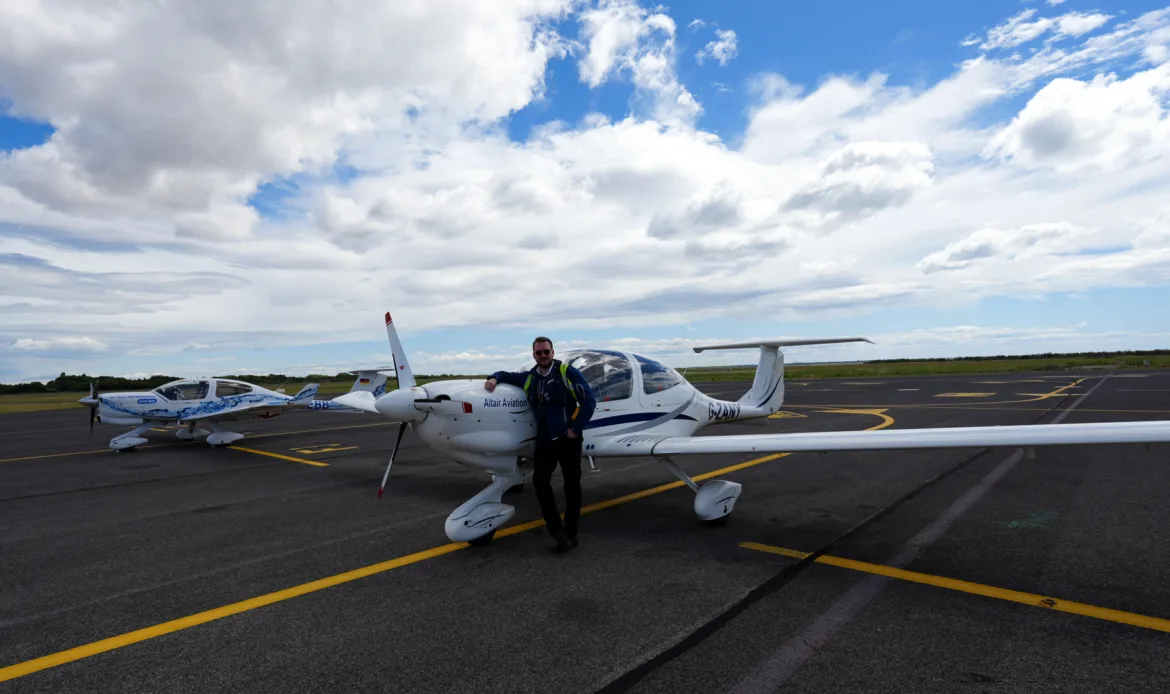
This meant we would melt before we departed, which is not what I wanted before a 3-hour flight to Italy, but it had already been 5 hours in the aircraft, and the flight levels are almost always cooler—in fact, sometimes it’s freezing compared to the surface.
Once it was our turn for departure, we lined up and took off, and almost instantly we were thrown all over the place. I suspect this might have been the strong, sometimes gusty winds, but my money was on the thermals, as it was starting to heat up in the final month of summer. As soon as we turned, we hit more thermals, giving a climb performance far in excess of 1000 feet per minute—the quicker we climbed, the better it became.
While this was bumpy, we had a fairly thick layer of stratiform cloud that, whilst manually flying, and the first bit of IMC since January (I kid you not) woke me up quicker than a large, strong Americano in Starbucks. There’s flying on instruments, and then there’s flying on instruments, and within minutes a sigh of relief as we got further climbs up to FL140, then FL150, and handed off to enroute air traffic rather than local units.
This is when we got the latest updates on the Golze weather system, and as expected, it showed thunderstorms stretching for hundreds, if not a thousand, miles across the Alps and as far south as the Mediterranean Sea. It had been a very complex area of frontal systems and a low centre over the Provence-Alpes-Côte d’Azur region. While this was not completely unexpected, I was glad that I was not navigating thunderstorms across mountainous terrain and had many miles to deviate around any weather. While some may question departing in anything but CAVOK, light winds, I was happy that I made a great decision to reroute my flight plans and route to southern France.
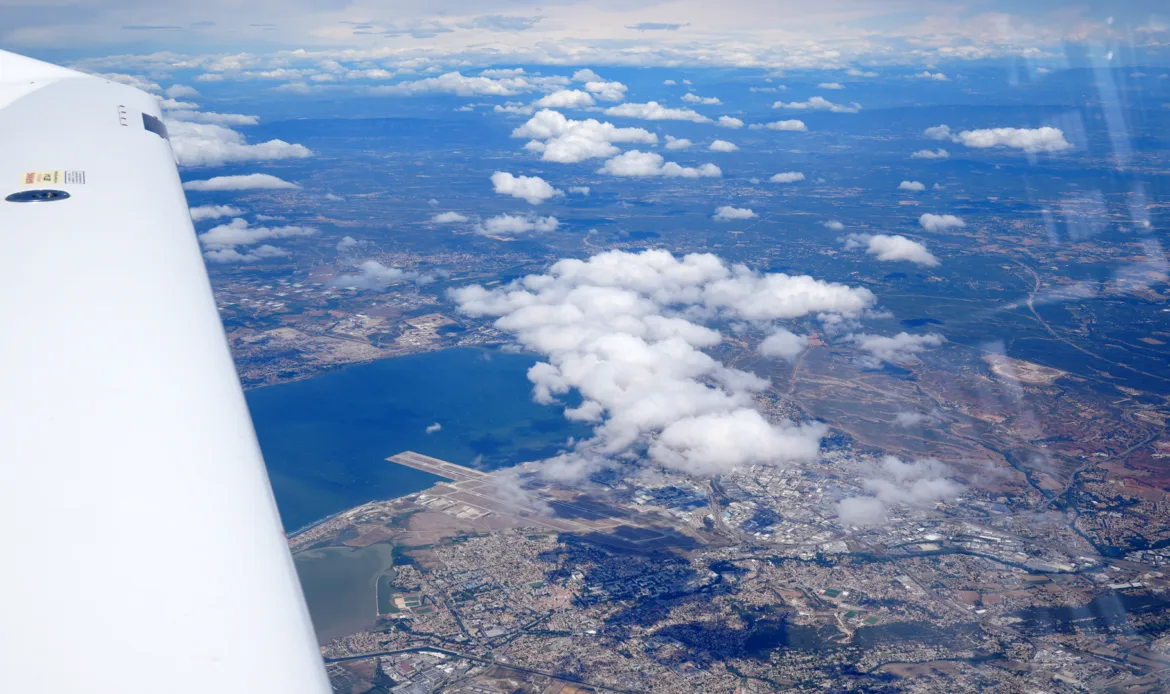
Frustratingly, with flying against the weather gods, and avoiding the Alps, which would have been a far quicker flight and a direct routing, somewhere at the range limit of the aircraft, it meant a longer day and an earlier departure to meet our slot into Bologna (which could have been changed).
Despite the mistral wind below, it was smooth at our altitude, but obviously, as we headed east, I spoke too soon, and we started to pick up some light chop and, on the odd occasion, some random wing rock from left to right.
We started making a slight turn to the right, having informed ATC of the weather ahead, but we weren’t the only ones; every single aircraft flying in this region was navigating these cells with a wide berth. We were very surprised that ATC was asking us what our next reporting point was, and I honestly couldn’t tell him where I could go, except somewhere far in Italian airspace.
It’s no surprise that ATC was querying my request to deviate, as I deviated 20 nautical miles off route for almost 200 nautical miles. The reason for this became obvious as ATC wanted to hand us off to Milano Radar and needed a waypoint for the handoff. ATC suggested ABN, but looking at the radar feed, this was still not possible, so we opted for our heading and waypoint, KALMO, just south of Genoa.

ATC also requested at the request of Milano that we climb to FL160, which I presume helped with their traffic situation. As we continued with Milano Radar, we noticed we were flirting, up close and personal, with some active CBs just south of Albenga. I was thinking of turning further right, but these cells were not as active as the weather to our west and further north.
During the transit, I heard lots of aircraft stating they were requesting ride reports as turbulence was between moderate and occasional severe—this was probably from aircraft descending through the weather near the active line of CBs to our north.

It wasn’t long before we would be over Italy; some 2 hours after departing southern France, the scenery was different, strangely more mountainous, and with that, an increase in bumps. Nothing too spectacular, but noticeable. A quick check of the terrain revealed tops of 7000 feet to our south and 6100 feet below our current route. This region of rugged terrain in Italy is the Apennines.
It’s at this point that we started our descent into Bologna, re-listened to the ATIS, and prepared our aircraft for arrival. After many years of wanting to come back to Italy and fly a light aircraft here, the bucket list was slowly filling.
Within 10 minutes, ATC started vectoring us, and a much-needed shortcut came along. It’s at this point that I request the RNP approach for the landing runway 12. This is what I briefed for, and having flown an ILS into Montpellier, I wanted to get at least one or the other in on this trip. This is not a requirement, and I know places such as the US require these currency requirements, but it’s a personal requirement of mine to have flown at least two types of IAPs on a trip where possible.
The frequency was one of the busiest I had ever experienced, and after 2 hours on the cruise, it was a shock to the system, and I had to be on the ball for this arrival. We were then vectored to the north in sequence with other traffic, and to my surprise, there were other aircraft behind us, such as Ryanair, that ended up holding for 10 minutes due to how busy the airspace was.
We kept the speed up, and I informed ATC that I could fly the approach as fast as I could, and hilariously, the A330 ahead of me was only going 8 knots faster, as I guess ATC had gotten him to reduce his airspeed to allow for some departures.
We were vectored to establish for the approach, then handed off to Tower, who also sounded very busy, with an angry Emirates pilot who sounded frustrated by the departure delay and seemed further angered by the fact that ATC informed him about a runway inspection that was taking place. Luckily, this wasn’t from my landing.
This is also where my fatigue levels were more apparent. One of the benefits of looking back over my flight(s) is learning from my mistakes. I have a due process when flying into busy airports like Bologna (BLQ), flying high speed until 4nm before reducing the power and then slowing to 90 KIAS until DA (decision altitude). Here we are at that point, but doing 24 knots faster than planned.
So what’s the cause? 1) I did not fully reduce the throttle; 2) I did not anticipate the lack of wind (which meant a faster groundspeed); and finally, 3) I did not put a stage of flap in to kill some airspeed (which I couldn’t do till we were below 108 KIAS).
But there’s more. This was likely down to the fact that at this point we had a 9-hour journey from the UK after completely changing my body clock around after doing 6-night shifts, and having an early departure due to severe weather over the Alps meant a push to beat the weather to mainland Italy.
The forecast for later that day was also not great, so this trip was either cancelled or we would end up in weather we probably wouldn’t want to fly into. The sky above looked rather ominous as we landed, and to that, a long journey—but a safe one.

With my rather long and unexpected landing, we vacated at Foxtrot, almost down the runway. Expecting a Lamborghini to follow me to Apron 4 and the GA terminal, my displeasure was further satisfied when a little Fiat turned up. After a shake of the hand with Andy, and going through the checklist, we shut down after 2.5 hours of flying from Montpellier and that, 8 hours of flying in the logbook with what should have been a 5-5.5 hour sector. Thank you, Mother Nature.
ATC Flight plan and route flown –
N0130F150 MARRI6S MARRI Y25 MTG G701 LACAZ Q302 ABLAK P856 RAPED Y15 ABN Z388 KALMO Y239 NIGSO NIGSO3N
Filed ATC flight plan for LFMT-LIPE


Stay in Bologna –
The airport is roughly to the northwest of the centre of the city, and the hotel that we booked was a 40-minute ride in a taxi, which was somewhat frustrating as we weren’t close to the centre at all. But this would be solved by a short taxi ride in, as the Relais Bellaria Hotel & Congressi is situated approximately to the southeast of Bologna city centre, situated in Villa Rizzi.
After our driver got a little lost finding the entrance to the hotel, which looks like it’s situated in the hills of a nature reserve, we finally arrived. It was time to relax, prepare ourselves for dinner, and have a chilled evening relaxing. This was more of a chilled one than going out drinking and an adventurous type of trip, although we did serve some vino.
After we had checked in and headed up to our room, which was of the quality we expected, we looked at eating, potentially in the restaurant at the hotel. The restaurant at the hotel was boasted as a contemporary dining experience, and we quickly noted that it had a Michelin star or two and was 33 of 1,312 restaurants in Bologna. The restaurant didn’t open till 19:30, so we had some time to freshen up before heading down to the reception area for the experience.
Corbezzoli – Bologna – a MICHELIN Guide restaurant
This was actually the first time, from what I was aware, that I’d ventured into a Michelin Star, not only because usually the portions are very small but the cost is usually prohibitive, but we ventured this time and enjoyed this full-tasting menu, where we had the options to choose from a six-course meal, and it was strangely very filling. We enjoyed this with some water (after being extremely dehydrated all day) and a bottle of a very fine local red wine exclusively on today’s menu.
We travelled to Italy in style, and we dined in Italy as it should be done.

t was now time to relax, but first I would take a quick walk to the nearest shop to get some water and soft drinks before bed. There’s nothing worse than waking up at night feeling dehydrated, and this was a much cheaper option than the hotel’s mini-bar. I took a short walk across the Torrente Savena via this weird combination of forest and a hospital to the highway, then across a roundabout or two to get to the nearest mini-market. The guy was very friendly in the shop, but now it was time to head back and get some much-needed rest.
After another walk back via the forest and the hospital, I made it back to the hotel and prepared for a much-needed night of sleep after a long day of flying.
After much-needed sleep, we woke up to really bad weather with low clouds, mist, and relatively heavy rain. We didn’t come prepared for the weather, and after reading around and looking at social media, it appeared this was going to last for most of the day. Severe weather was forecast across Croatia, Italy, and Slovenia through at least Aug. 5. Possible transport, business, and utility disruptions with strong winds and thunderstorms.
Most of the weather in this region seemed to be rainy rather than thundery, so after breakfast, we had a look at the gym and then proceeded to see if the swimming pool would open. A quick check with the reception stated the obvious (there was some vegetation scattered all over the pool area).
After a few hours chilling at the hotel, we decided to look at food options for dinner and decide whether to travel into the centre of Bologna or look for something closer. I was keen on a walk, but the nearest restaurant open this weekend was a fair 10 minutes away by taxi.
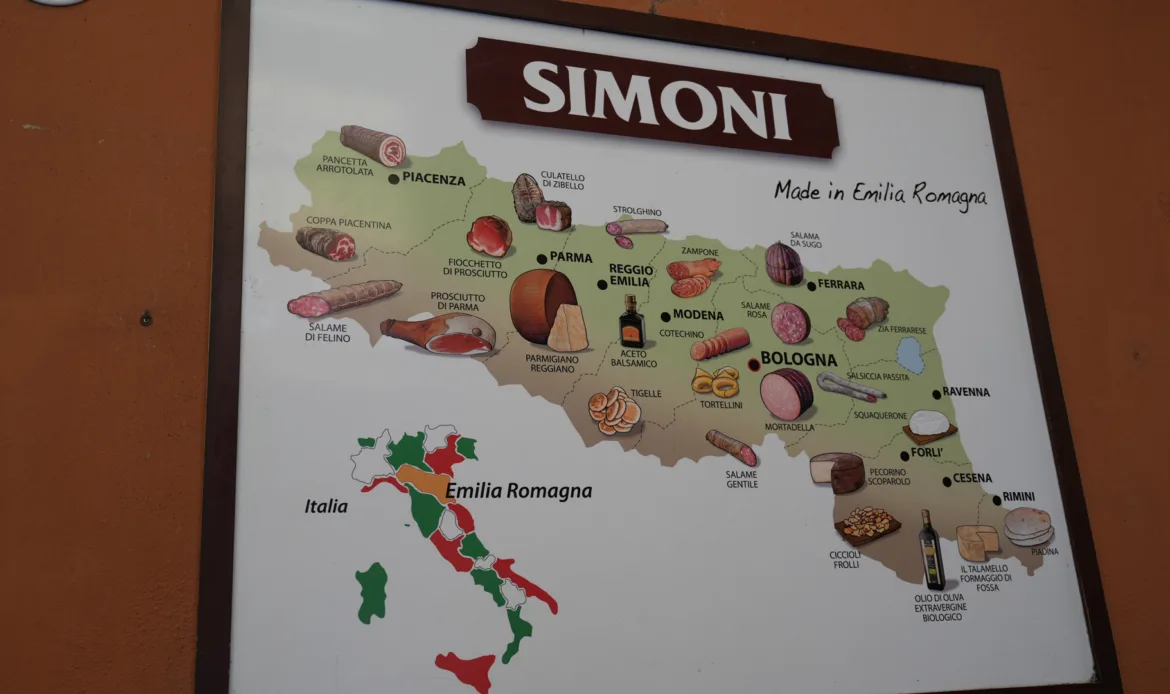
The other issue was that not a lot of restaurants seemed to be open in August, as it was the holiday season for the locals, and we found this very difficult when trying to book as most places were simply closed.
We settled on Ristorante Pizzeria Pino Smeraldino, where the taxi took us straight outside. When we arrived, the place was fairly dead for the time of day, but inside there was no chance of sitting because there were a lot of bookings. So we were offered outside, but at sunset, this would be fun; lots of mosquitoes at sunset post-rainfall. We were definitely getting bitten.

Sadly, I overindulged, and the portion sizes were absolutely bonkers. The starters were great, but definitely sharing and not individual, as I found out, and the French fries were probably not needed. Great pizza, tasty ingredients, and decent quality—but overly expensive. Sadly, the lobster was definitely not as fresh as Andy had ordered, but I suspect most people here wouldn’t order seafood.
Part of this trip was to chill, and by the time we had eaten, we were pretty wasted, mostly from the long day before, and we really wanted to save our energy for tomorrow’s trip into Bologna as the weather was looking fairly decent.
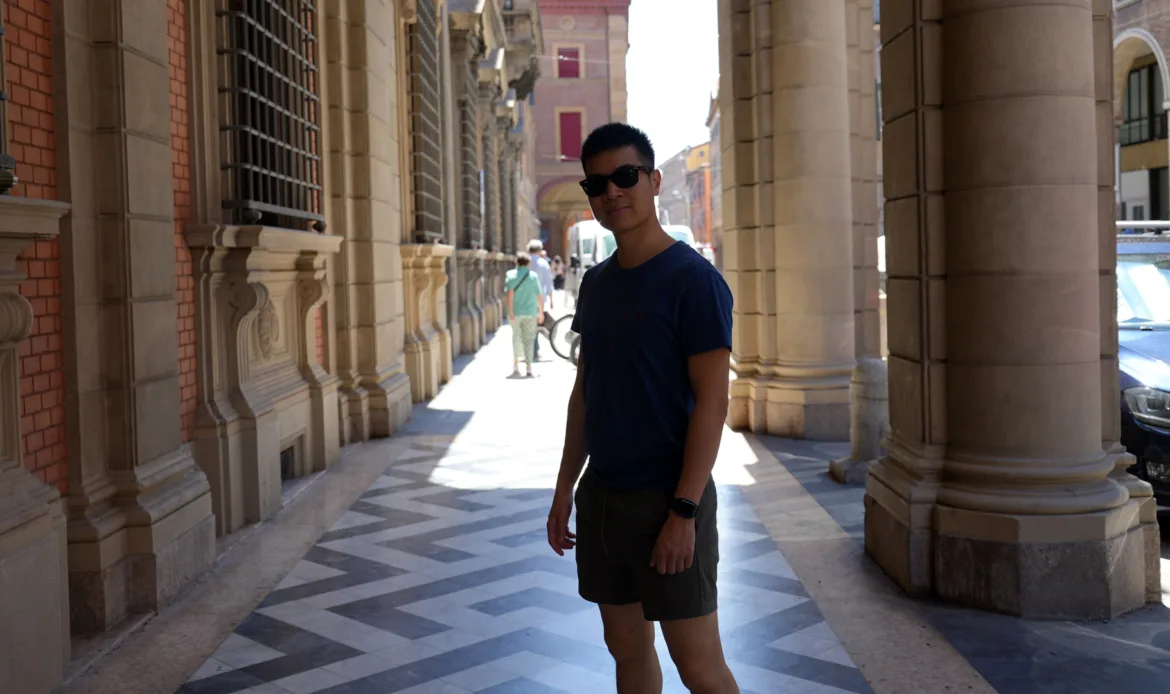
We got the taxi back to the hotel, and on arrival, I took a walk back to the mini-market for some drinks and (yes, bad for my diet) sweets so I could have a chilled evening in the hotel room.
The next morning, after breakfast, we took a taxi to the city centre, electing to explore the city rather than the four walls of our hotel. This was our last full day in Bologna, so it was now or never. We were dropped off at the Two Towers and walked circularly to the southeast, then back on ourselves, taking in all that the architecture had to offer. The Towers of Bologna are a group of mediaeval structures in Bologna, Italy. The two most prominent ones remaining, known as the Two Towers, are landmarks of the city.
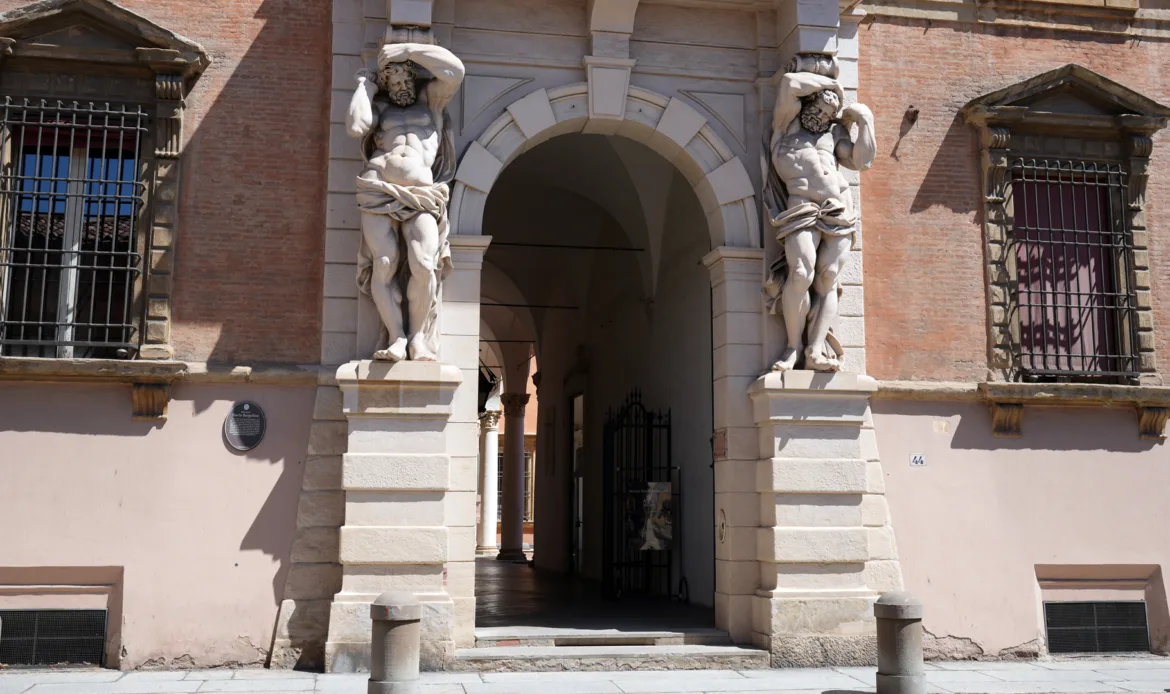
Before heading back, Andrew wanted to find a popular place for a spot of lunch, but finding a seat was difficult, especially as a fair few of the places were closed for the summer holidays. We came across Ristorante Teresina, one of the most unique places I’ve seen—an outdoor seating area in an alley. This was a very unique and definitely Instagrammable location for a spot of lunch.
Finally, some local dishes: a tagliatelle al ragu bologna with a spot of red wine. After lunch, we headed back to the hotel for some chill time and hopefully to take advantage of the swimming pool and get some important vitamin D. The pool was probably in need of some TLC, and as I’ve found post-covid with most hotels, a much-needed clean-up was needed, especially the jacuzzi, which had algae sitting on the sides.
We opted to call it a day and head back to the hotel room for a shower before heading back into Bologna for some dinner. After a short taxi ride back to the city centre, we had a look around for some traditional restaurants that didn’t require a booking. We looked for some fresh pasta, and Ca’ Pelletti seemed to give us the warmest of welcomes with the typical warmth that Romagna provides.

For starters, a local beef ravioli, followed by a healthy grilled chicken with local vegetables, along with some rustic potatoes, not forgetting a glass of red wine to wash it down; after all, we are in Italy. Andy had what I can only describe as a burger without a bun…
Once we had paid the bill, we went for a late evening walk around the city centre, finding live music in the centre—the Piazza Maggiore—as the setting sun glistened across the structures of this beautiful city and thus the end of our trip.

I came across OGGI Gelato Bologna and one of the cheapest I’ve ever purchased. Considering this was the city centre, this wasn’t a bad price to end the trip. As most of the centre area seemed closed off to traffic, we had to walk a fair bit away to find a taxi back to our hotel, and with that, back to the hotel to rest up and take a quick look at planning the flight home, back to the UK.
We lost the Alps –
After the taxi ride back to the hotel, I looked at the weather and considered a route back to the UK. The options available were similar to the outbound, but with the strong forecast winds, a stop was planned. I had already pre-empted this and had emailed Montpellier, who, despite the short notice, seemed relatively happy for us to fly back via them.
I was looking at two options.
- Route via Montpellier, then up to the UK, which also presented some strong headwinds and more cost.
- A flight across the Alps to Baden-Baden to refuel, then fly onwards to the UK.
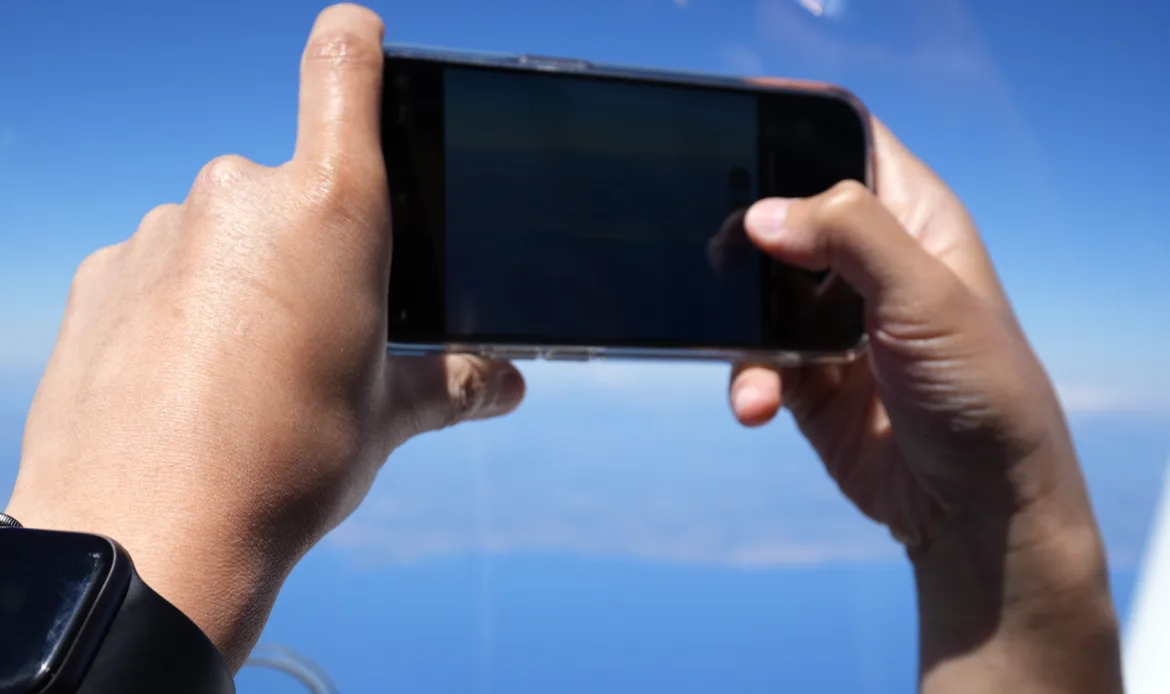
The Zurich TAF was showing TCU, and Windy was showing some cloud tops at FL140. I shared on EuroGA forums and PPL IR and was told that the weather doesn’t look great, with a LOW-LEVEL SWC for the ALPS by MeteoSwiss/Austro Control showing Precipitation along and north of the Alps becoming more frequent and spreading eastward. Turbulence further intensifying.
It was not looking very good, and I believe the best course of action was to route the same way we had come. I was told to expect high tops, isolated and embedded TCU, and descent into Baden-Baden through the freezing layer.
It was such a shame to lose the Alps, and as we found out, the weather isn’t something to mess about with, especially when it involves mountainous terrain. But with my flying, I always owe great respect to the weather and never push the boundaries I am uncomfortable with or what others may deem dangerous. Having that respect of the weather has allowed me to find my comfort zone safely.
Return Trip VLOG –
Flight to Montpellier
Having worked out the estimated time we would need to get to the airport, after breakfast we checked out of the hotel and headed to the airport and the general aviation terminal. We headed to the airport at least 90 minutes before departure.
We had a look at the Follow Me, Lamborghini, which is only brought out when the weather is good. I presume that meant when rain was not forecast. Coincidentally, the aircraft was not where it was before but was on an aircraft towing tug, where they must have moved it inside or had moved it elsewhere. I never asked, but when I needed Jet A1, I was told to jump in the aircraft while it was taken to the fuel pump.

The GAT seems to refuel aircraft this way, rather than with a machine. Unless, of course, you wanted to pay a higher rate, then by taking the aircraft to the fuel station vs. the fuel coming to you, this was of course the cheaper rate.

We went back to the terminal, paid our fees, and then headed to the aircraft, where it was slowly warming up. We returned to the aircraft to do our final checks and made sure there was no damage done with towing the aircraft, something I’ve never seen done before. We jumped into the DA40, got our clearance, checked the latest weather information, and plugged in all the necessary flight plan information before our flight to southern France.
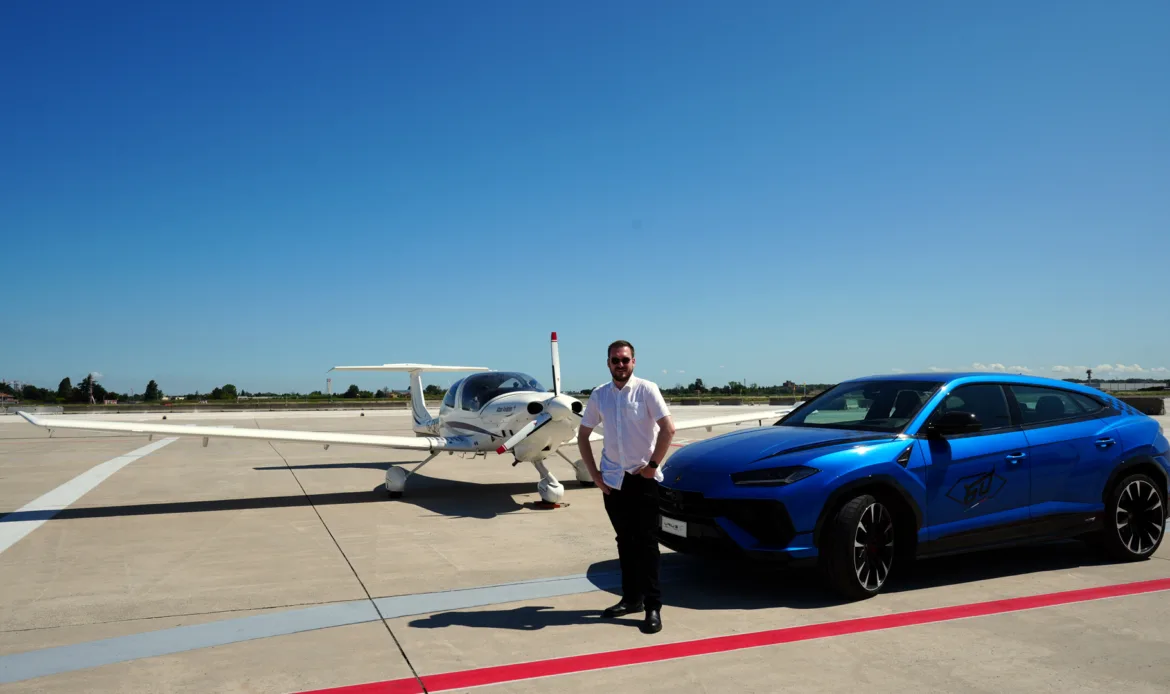
We taxied all the way down to the reciprocal end of the runway we had landed at a few days ago and awaited an aircraft ahead of us to depart, knowing full well that we would be a fair few minutes before it was our turn. You have to bear in mind that the GAT is one end of the airport, and you’d have to taxi the aircraft a very long way for departure if the other runway is in use.
We finally got take-off clearance and noted that it was pretty bumpy already, with lots of active thermals. We commented that as the day progressed, it would get pretty bumpy, and this was an understatement.
As we flew further north, we reached the initial top of the climb, and looking at the terrain ahead of us, the strong winds, and the lumps and bumps that we were getting, we elected to discuss with ATC climbing higher to avoid the worst of any turbulence.
As we headed further north, I got hit by the worst turbulence ever over the Apennine Mountains near Genoa. I was not sure what it was, but it was violent. I can’t see it being thermals. Maybe clear air, but whatever it was, it was pretty rough.
I took the aircraft off autopilot and flew it manually. Once I regained control, I elected to re-engage the autopilot and requested from ATC that we could get away from the land and fly out to sea. I wasn’t sure what the cause was, but it could have been from the Alps and we were being hit by a mountain wave, or it could have been the local terrain.

As we went out to sea, there were not much more lumps and bumps, except a few maybe clear air lumps. ATC querying our routing, we then accepted a direct back onto our route after a deviation off track of some 30 NM.
Just south of Nice, we were looking for Monaco, which is due east. The views of the French Riviera were beautiful, and we both discussed how amazing it would be to fly in for the Monaco Grand Prix, rent a car, and stay an hour or so away because the costs of staying in Monaco would be very expensive.
These long flights cause you to have discussions about everything you have seen and things you have had happen to you. Random musings of boats below us and the turbulence that we had experienced became a topic of choice.
It wasn’t long before we discussed the strong headwinds and whether we should start our descent after the Martigues VOR (MTG). This would be less than an hour from Montpellier, and the strong winds were likely all the way down, so the flight time savings we would have from avoiding turbulence would probably be negligible for the remainder of the flight.
ATC then gave us a vector, presumably due to traffic, further into the wind, which, while going in a similar direction, did slow us down significantly. We requested a turnback onto our route, which we got quite quickly and alleviated a longer flight time.
This headwind was strong, and likely coming over the mountains, it would cause us some problems, so we had to monitor this. We then came within range of the ATIS, which we received, and understood Runway 30R would be in use like it was a few days earlier.
We did an initial descent to FL130 in search of better winds, but as we flew further along the route, we got a weird drop in airspeed. I’ve noted this before with strong winds, convective activity, or mountainous terrain: there’s just not enough power in the aircraft at that level to maintain the altitude, and unless things become critical, it’s usually easy to apply some power until the airspeed increases or descends. The last time this happened to me was on our trip to Girona, where we got caught out twice by this phenomenon.
We were offered a descent by ATC, which at first was very distracting as we were trying to aviate before communicating. I asked ATC to standby, but he was fairly persistent yet helpful enough to offer us a decent solution in our situation. I presume this was because approaching is the fairly busy airspace for Marseille, and the level he wanted us at was peculiarly pointing towards that.
Once we had cleared that airspace, we were handed off to Montpellier, where we were given further descent and lots of directs towards the start of the approach and a continuous descent all the way to the ILS.
This was a fairly bumpy arrival, and the time we were arriving was peak heating, so it started to dawn on me that departing here in an hour would be even bumpier, and towards the mountains, it would be even bumpier, but I could only hope that it wasn’t.
As we continued towards the same runway we landed on a few days earlier, in slightly more favourable conditions, I was hopeful of a better landing. I was wrong; wind shear robbed me at the last minute and was extremely frustrating. ATC asked what the winds were, and I told them jokingly that we landed three times as I bounced down the runway. Presumably, we weren’t the only ones reporting wind shear on the final.
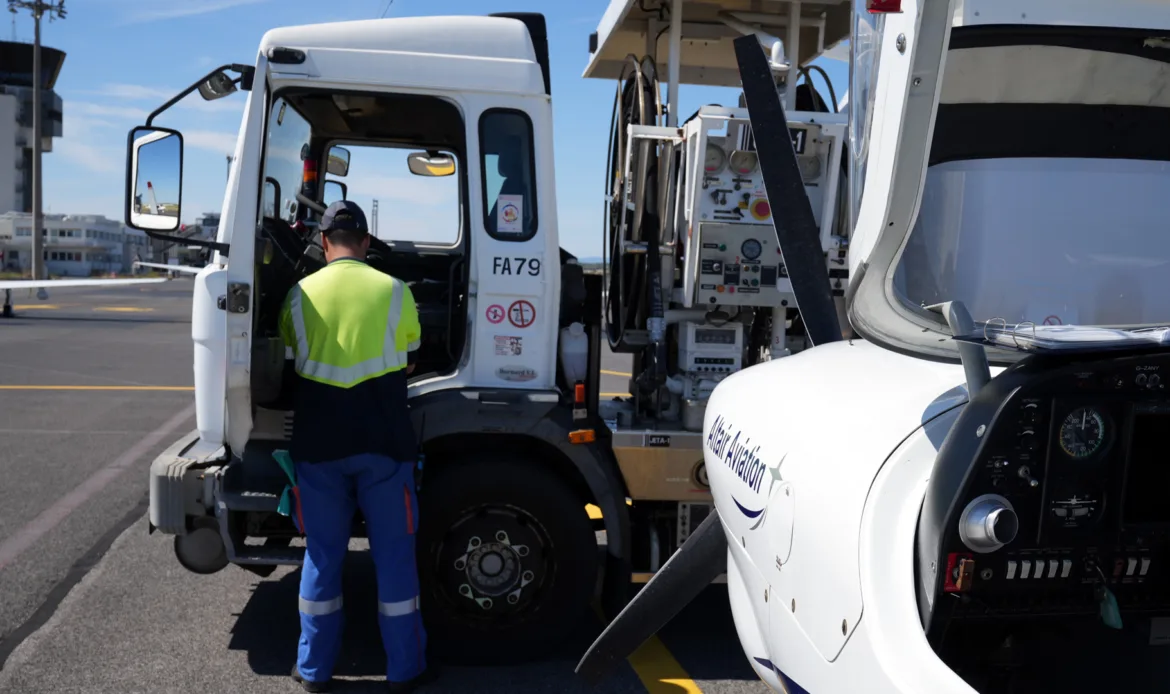
ATC Flight plan and route flown –
N0130F150 LUPOS M859 LAGEN Q712 ENOBA Z185 BORDI N736 PIGOS N86
Filed ATC flight plan for LIPE-LFMT
ADUDU/N0130F140 N86 LERMA A3 RUBIT G7 MTG Y25 MARRI
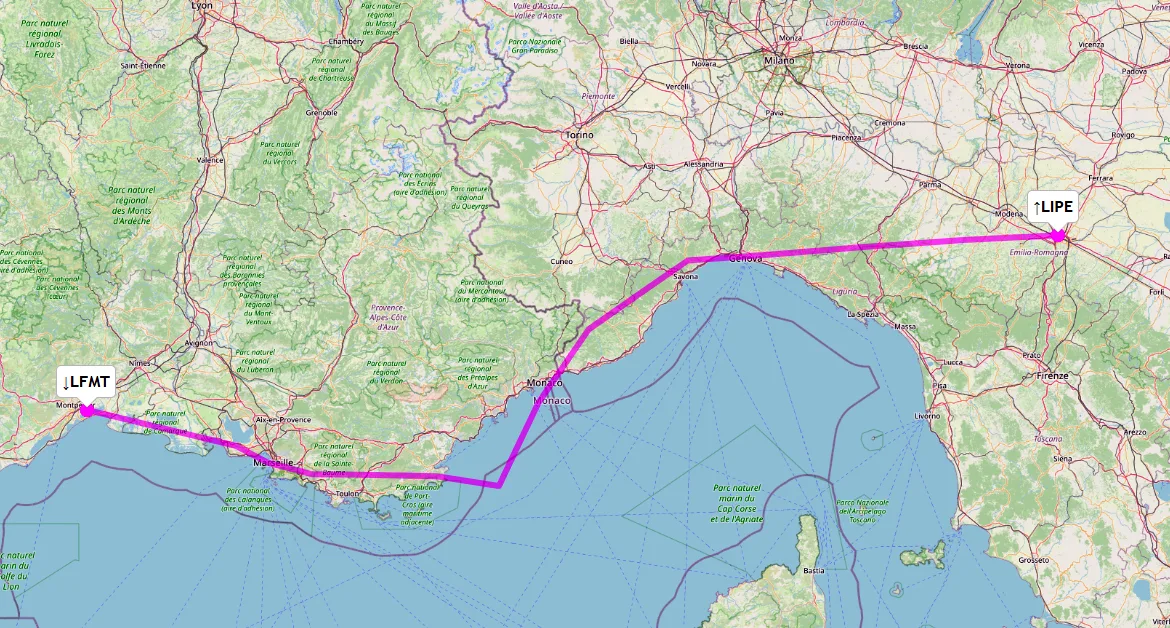
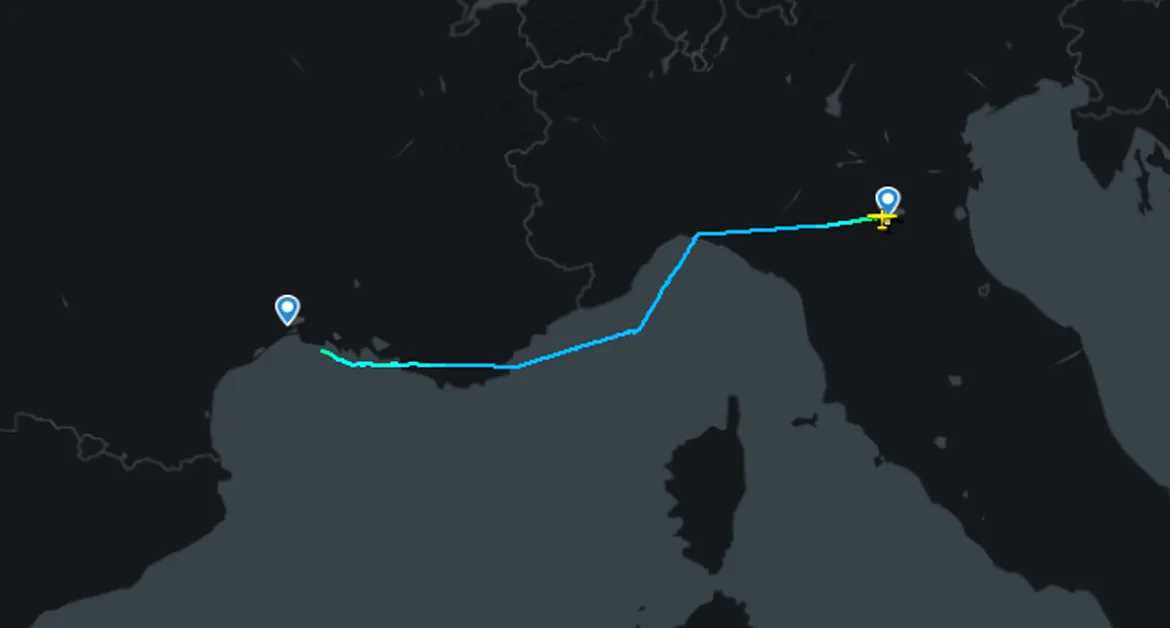
Flight to the UK –
After a very quick turn-around, some 25 minutes of refuelling, using the toilet, and resetting everything for the next flight, we were on our way to the UK. After a short taxi to the far end of runway 30R—a stink that could only be compared to a warm swamp—we were ready to go.
It was just after 4 p.m., and I expected this to be a rough one, peak diurnal in August, with a fairly strong wind coming over the terrain in the direction we were heading. So we opted for the full length of Runway 30R, some 2600m at holding point T1. With heatwaves coming off the scorching hot tarmac, I knew that this would be the best decision to climb as quickly as possible.
We were cleared for take-off once we had done our power checks, and after a relatively long take-off roll—we weren’t far off the maximum take-off weight—we got airborne—relatively smooth initially, and then it started. As we were a fairly slow climber, the easyJet from Gatwick that was landing just after we had departed was given instructions in the event of a go-around to climb the runway heading.
Coincidentally, the MEN6R departs slightly to the right of Montpellier before heading straight for the MEN VOR. The go-around procedure follows a similar path before turning back to the FG (ILS), thus minimising noise for residents of the city.
Once we were tracking the correct SID, Tower handed us off to approach, who started to climb us up, and after some negotiation, we went for FL120 just to ensure that we were clear of the terrain and any possible mountain wave, although that wasn’t actually forecast.
This was probably one of the bumpiest departures I’ve ever flown, and controlling the aircraft was a challenge as each bump and lump upset the direction and control of the aircraft. If this was what summer was like flying in the Mediterranean, then I can’t even imagine the fun of getting a pilot’s license down here just for the weather’s sake.

The DA40 can be thrown around a fair amount, but this was something else, and that’s because the DA40 has large wings for its weight, becoming a handful on a bumpy summer’s day. But as we climbed higher, despite the ever-rising terrain, once above FL80 or 8000 feet, it seemed to get smoother, to the point where I could let the automatics fly the aircraft without fear of them putting the aircraft into an unusual attitude.
We passed peak heating, and so for the rest of the flight, things should be relatively smooth, especially at FL120, with the option to descend once we were clear of the high ground. However, after some troublesome ETA estimates due to the strong winds and the long climb due to our weight, we finally elected to stay at FL120 as there was likely no difference.
In fact, due to our altitude, the TAS figure was better than expected, and thus we were probably 10 knots faster up at altitude, so that made the slight increase in headwind negligible. We would also be flying towards the northeast for the first phase of the flight, so we wouldn’t have a full-on headwind component until the later stages of the flight.

The aircraft did start to porpoise at the bulk of the terrain, similarly to how it did on the way over the Pyrenees on our way back from Girona, but this was relatively light and benign but a little noticeable, and the only cure was to let the autopilot do its thing. I checked our ETA, and it was similar to what we would have gotten at FL100, so we remained at FL120, which had an increase in TAS.
As with most flights, you can expect with almost certainty shortcuts that shave some time off the flight plan, and that can help you usually reduce track mileage. The routings east of Paris or west of Paris seem to coincide with aircraft above you on the approach into CDG, which is why most of the time you’ll get some vectors to allow that traffic to efficiently descend.
Paris is an incredibly busy bit of airspace, and I think if it weren’t for the fact that London has so many airports in close proximity, the hands-offs for Paris are quite regular, with multiple sectors on our way up from the south. But saying that, we are doing almost 150mph, so moving across the sectors relatively quickly vs. climbing out of London when we normally get 2 or 3 handoffs in the climb.
As we headed further north, in almost 4 hours we were on the final stretch towards the UK, where our groundspeed became heavily impacted, and with every shortcut, we were eerily close to some convection north of REIMS.
One thing I’ve realised is that there’s still so much more I could be doing on these long sectors, and as of typing this blog, I’ve recently upgraded my QRH and process to ensure that my enroute checks are more comprehensive, so I am not left doing anything for long trips.
We were handed over to London quite early, just southwest of Calais, to my surprise, but I still managed to pick up the London ATC. Once we were inside the FIR, we started to get descent instructions and started our descent into London, gradually but surely, before being handed over to Thames Radar, who gave us the final descent instructions.
Sunset was quickly following behind us, and it wouldn’t be long until another day in the airways was completed, and any thin layer of cloud was blocked out by the brightness of the summer sun on what would be my last trip until September.
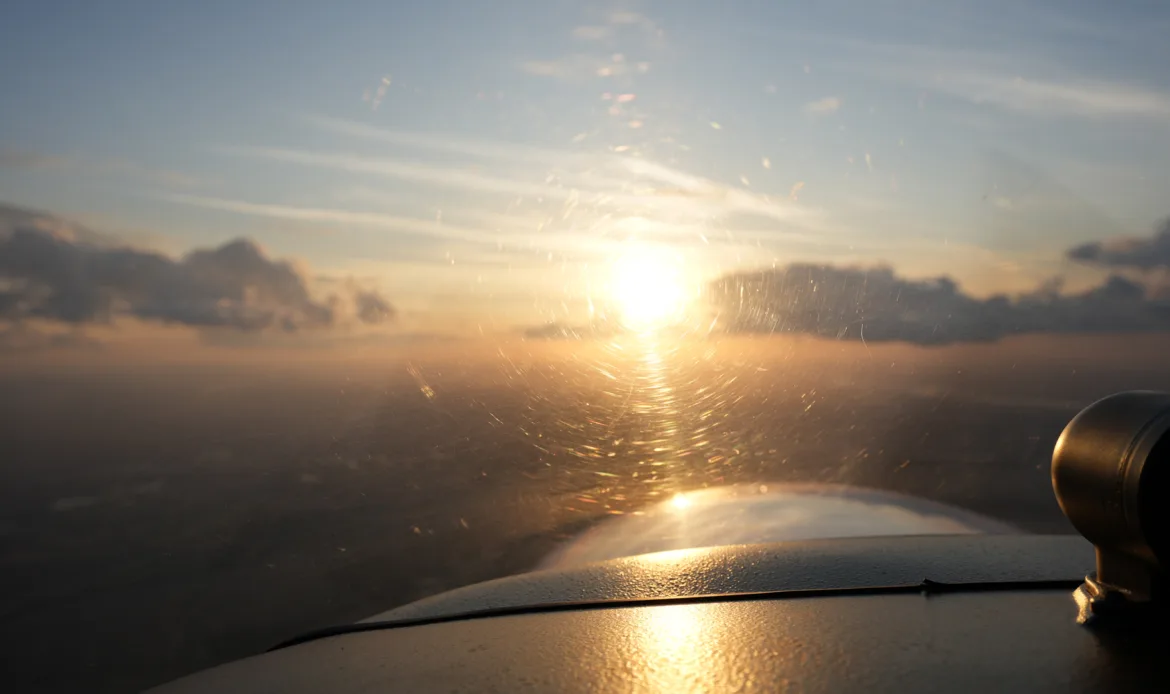
After a firm touchdown and completing over 16 hours of flying, we made our way back to the usual parking spot. Whilst not as fast as the outbound sector, the route home would be 5 hours, 25 minutes long, and one of the longest flights I’ve done since Prague last year. Checking with the flight plan time, this was not much longer than what was filed at FL100.
A short taxi to the stand, shutting down the aircraft. I was elated. I had flown an aircraft to Italy and back with my great friend Andy. We had finally completed a big trip together after many years—this wasn’t a short day out to Le Touquet; this was a full-on weekend away where we together made it happen.
ATC Flight plan and route flown –
N0130F100 MEN A27 MOU B373 AVLON/N0123F100 B373 TRO/N0125F100 G40
Filed ATC flight plan for LFMT-EGSG
VATRI B3 RINTI/N0125F090 L10 DVR L6 DET

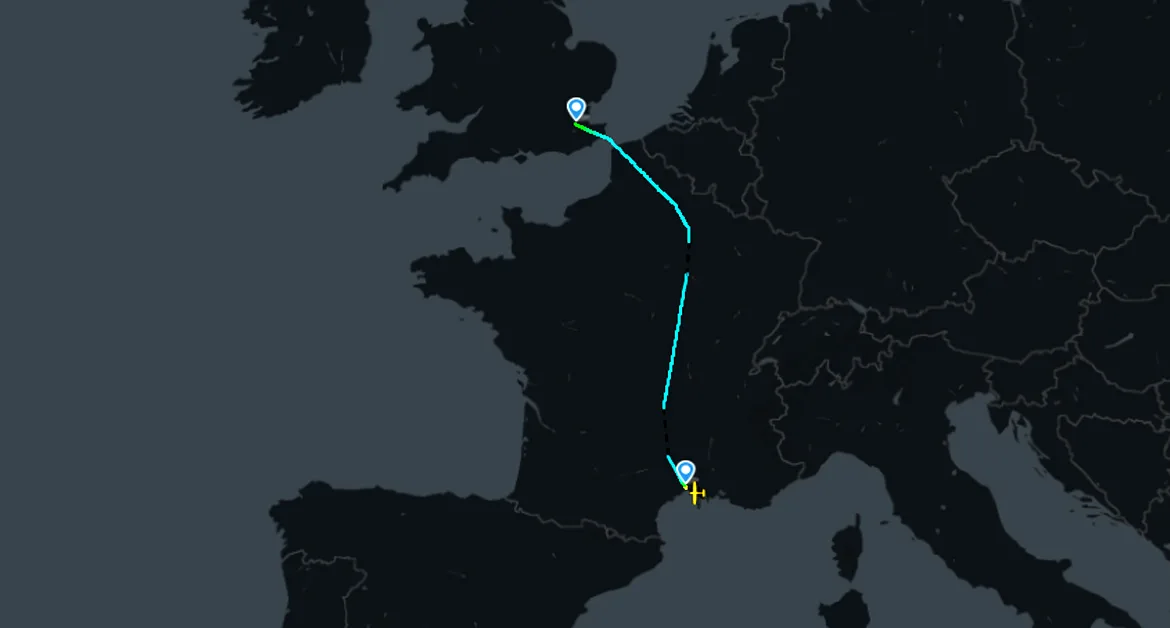
Outcome & Costs –
Flying to Italy wasn’t easy. Not only is there one of the biggest mountain ranges in the world separating all of Europe and the Italian Mainland from a direct point-to-point flight, but the necessary hassle involved in planning such an adventure, finding an airport that both has customs and is instrument capable and would accept a sub-2T aircraft, was part of the challenge.
Would I do it again? Yes. Would I do it in a hurry? Probably not, and that’s simply because one has to get the weather just right, unless, of course, your aircraft has a lot of performance and can avoid the severe weather that the Alps can entertain. Thunderstorms, mountain waves, and icing conditions, to name but a few.
Italy is a beautiful country, and it has a lot to offer, but the distances involved in flying around the Alps made this one of the most stressful to plan, along with the added complexities of the French Rivera and its associated airspace. This is not for the faint-hearted.
Bologna Airport Costs –
The final bill was split into the following;
Airport & Handling Costs:
- Service – 4.25 EUR
- LDG+TO – 7.40
- Government Charge UE – 7.40 EUR
- Parking Fees – 10.56 EUR
- All-inclusive facilities fee – 20.00 EUR
- Stamp Tax – 2.00 EUR
- Taxi to TAG-RELAIS BELLARIA HOTEL – 39.50 EUR
- 147.80 in total.
Sub-Total: £127.84
Jet A1 Uplift: 102.98 EUR (£89.07 (69 Litres) @£1.28 litre
Sub-Total: £216.91
Bologna Costs –
Food, Drink & Leisure Costs: £206.63 (Food/Taxi’s split amongst us)
Accommodation Costs: £116.66 per night
Total Accommodation Costs: £350.00
Travel Costs: £34.00 each way (Est) – EUR 39.50
Sub-Total: £556.63
Montpellier Airport Costs –
Jet A1 Uplift (first tech stop): 188.88 EUR (£161.37 (92 Litres) @£1.75 litre
Jet A1 Uplift (second tech stop): 149.87 EUR (£129.63 (73 Litres) @£1.73 litre
Landing Fees: Stop off on the 4th of August for 90 minutes and the 7th of August for 50 minutes for a refuel. Quick service and paid for Jet A1 by Visa Debit.
The fee comes as a FORFAIT JOURNÉE ET JOUR SUPPLÉMENTAIRES/ DAYS PACKAGES and totals EUR 29.28 (£25.95) for both movements in and out.
All arranged via [email protected]
Flying Costs –
Aircraft Charges: £2,959.12 (@ £183 per hour (16 hours 10 minutes flown))
Airport Fees: £153.79 (As above)
JetA1: £380.07
(Wet Rate drawback) Credited £221.14 (-) (GZANY) (234 litres at EGSG rate)
Total Cost –
Total Costs (Non-Aviation): £556.63
Total Costs (Aviation): £3118.05
Total Costs (All): £3674.68
Version 1.2 – Last Updated 13/05/2024
Aircraft –
The aircraft is a DA40 TDI, which uses a Thielert “Centurion” 135 hp (101 kW) diesel engine and burns diesel or jet fuel. It has a constant-speed propeller and FADEC (single lever) engine control. G-ZANY is based at Stapleford Aerodrome, Essex, UK and was delivered as new in 2003.
Read more about the aircraft on the dedicated page

Supporting the YouTube Channel –
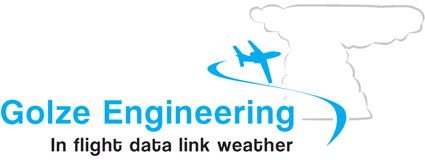
Support the YouTube Channel –
Welcome to The FLYING VLOG…
I am a current PPL(A), SEP (LAND), IR(A) SE/SP PBN, IR(R) & Night holder. Flying the world, exploring its hidden treasures. Taking pictures and vlogging the journey; I hope I can provide you with an oversight of my progression as I develop my skillset and airmanship in exclusive videos on my YouTube channel.
Now flying IFR in the Airways of Europe & beyond. Bringing you an exclusive niche to YouTube, flying in the same skies with commercial airliners.


2 Comments
Join the discussion and tell us your opinion.
Great story and lots of details. Very useful in helping with my own flight planning around Europe. Just one question, what oxygen system are you using onboard? Any information and experiences you can share ?
Hi Rick, Thanks for commenting – did you watch the videos? I am glad that my perspective helped you greatly – I am using the Mountain High System with EDS (CF-048 + EDS). I will be creating a vlog and blog on this for release hopefully this summer. It’s became a very useful gain to my IFR flying allowing many trips to come to fruition.